Simplify the life of colleagues
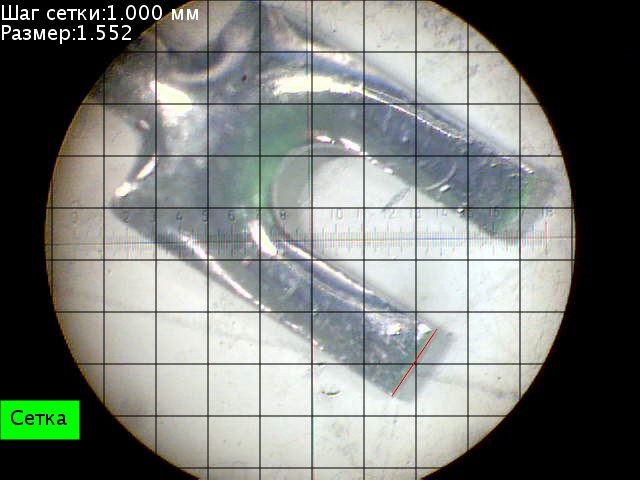
Hello, today I would like to tell you how using a minimum of knowledge can greatly facilitate the lives of your colleagues.
It will be about a microscope with a conclusion to the monitor, with some measuring bonuses.
Since the first version was of little use, and the second was inaccurate, the idea of the third version was born.
At first I will describe the essence of the problem, it may seem petty to you, but it badly ruined people's lives.
Surely you know that Quality Control Department is a technical control department, and as a result, they check all output products. It seems everything just you say and make a mistake, in addition to a large baggage of knowledge they need manual work and a bulkhead.
If the item is large, then it is easy to inspect it for defects, but what if the item is 7 millimeters in diameter and there are hundreds of them?
')
At first I tried to make the optical and guiding system myself, but it came out crap (how and why by the link above, because the material is volumetric). It worked, but the backlash and beats due to manual manufacturing brought all advantages to nothing.
Therefore, I decided to use a ready-made microscope, since it has an optical system and focusing, it remains only a wide adhesive tape (there was no canonical tape) to attach the camera to the eyepiece. In parallel, the development of software for measuring linear dimensions went straight to the screen. ( Processing is used )
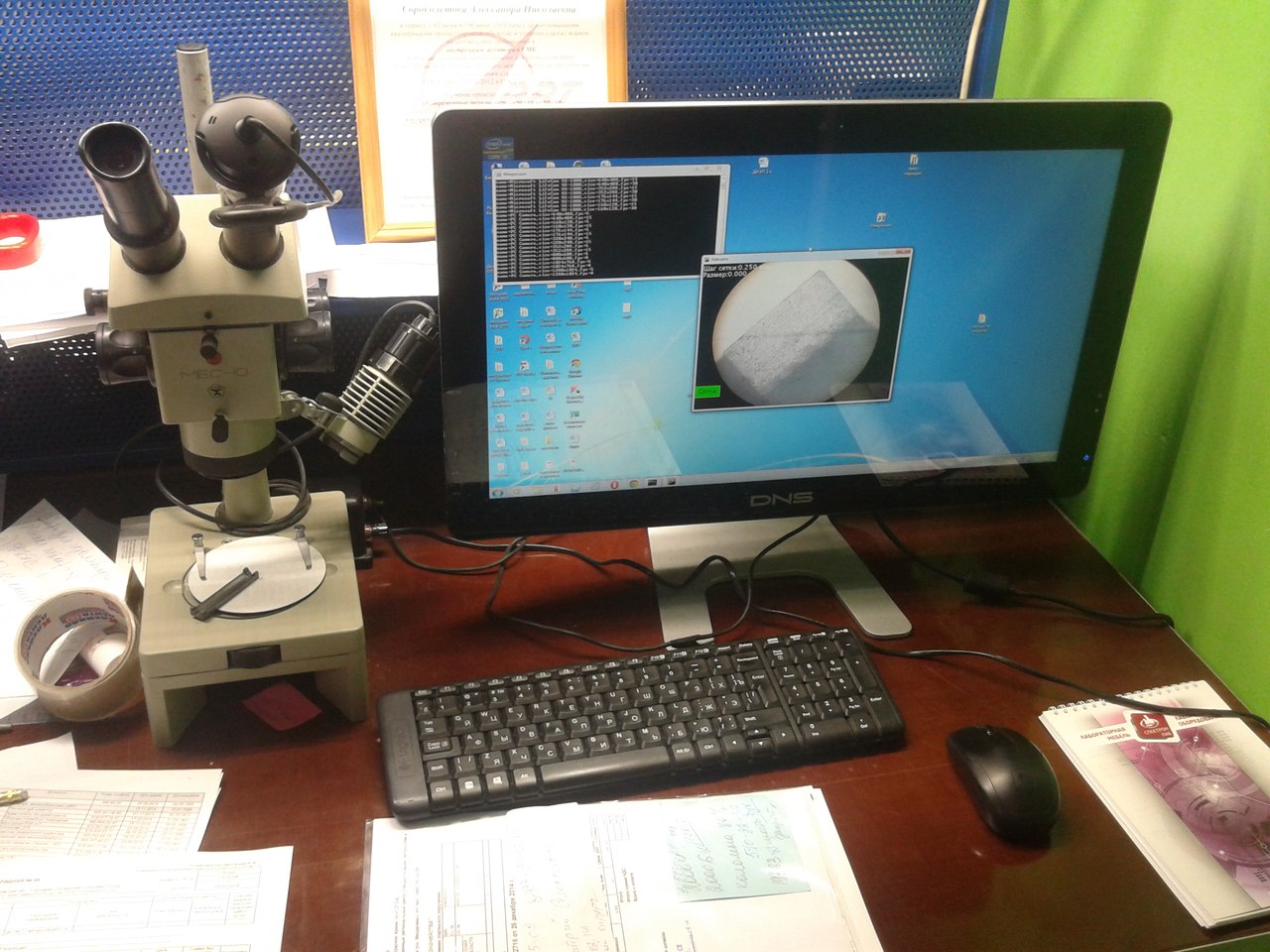
That's my darling, let's see what he sees (unfortunately there was only a camera with a resolution of 640x480).

As you can see, clarity, contrast and color gamut are quite perceptible. Here you see the elements of the measuring part (step, size) and the display elements (grid), but first things first.
Obtaining an image on the screen is not difficult , but it does not provide enough information about the size of the observed object. The first idea was to make a measuring grid, that is, put the object and immediately see its size.
The grid had to be “believed” using a calibration tile 0.5 mm thick, you put it under a microscope and adjust the grid size, it turned out that 0.5 mm is 26 pixels.
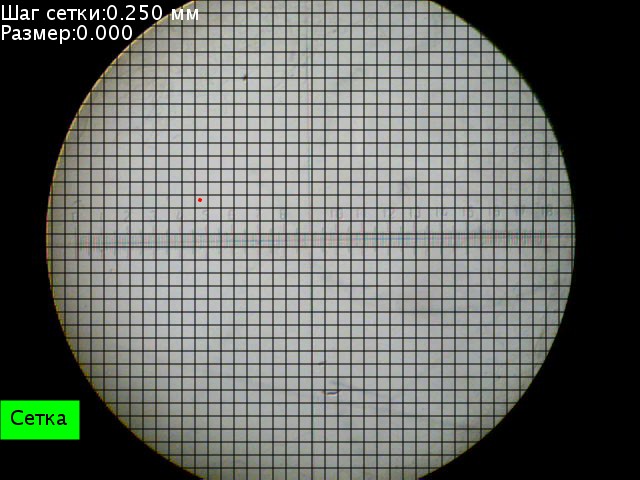
But this is sometimes not very convenient, so a button was introduced to turn the grid display on / off. But this is also not enough, because the operator does not always need a fine grid, so the possibility of scaling the grid was introduced.

But this is also not enough, because the operator needs to very precisely place the sample under the grid, doing the work very precisely, it tires.
The output seemed to be “direct measurement with a mouse,” that is, the operator clicks on the screen in two places and calculates the length of this segment , converted from pixels to millimeters.
The accuracy of this method in 20 samples in comparison with an electronic caliper and micrometer turned out to be about 0.1 mm, which fully satisfied the quality control.
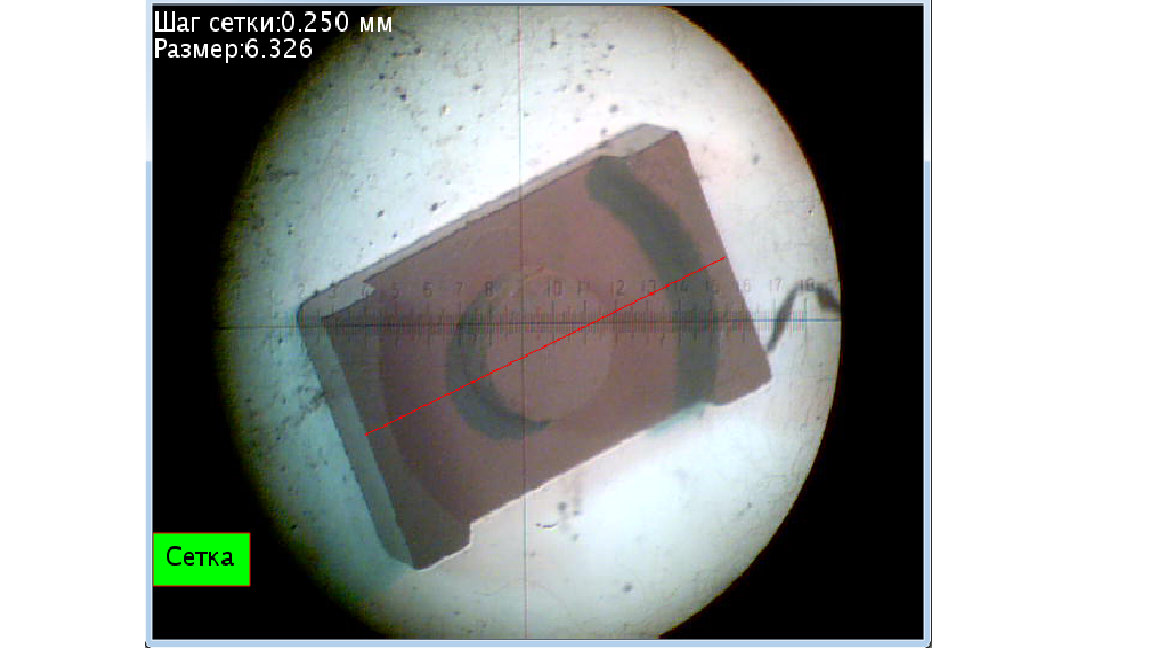

In the end, everyone arranged everything, but there was a small awkward moment - screenshots. Press Alt + PrintScreen each time, and then save uncomfortable. Therefore, the ability to save a window image with the name of each file by date, for example, Probe12 \ 10 \ 2014.jpg, was bolted.
This was the final model, which is operated.
Finally a few photos. (Write if you want more)

This is a ferrite-glass rod, coated with titanium using cathode deposition in a vacuum chamber, in the photo just the border of the transition of materials.
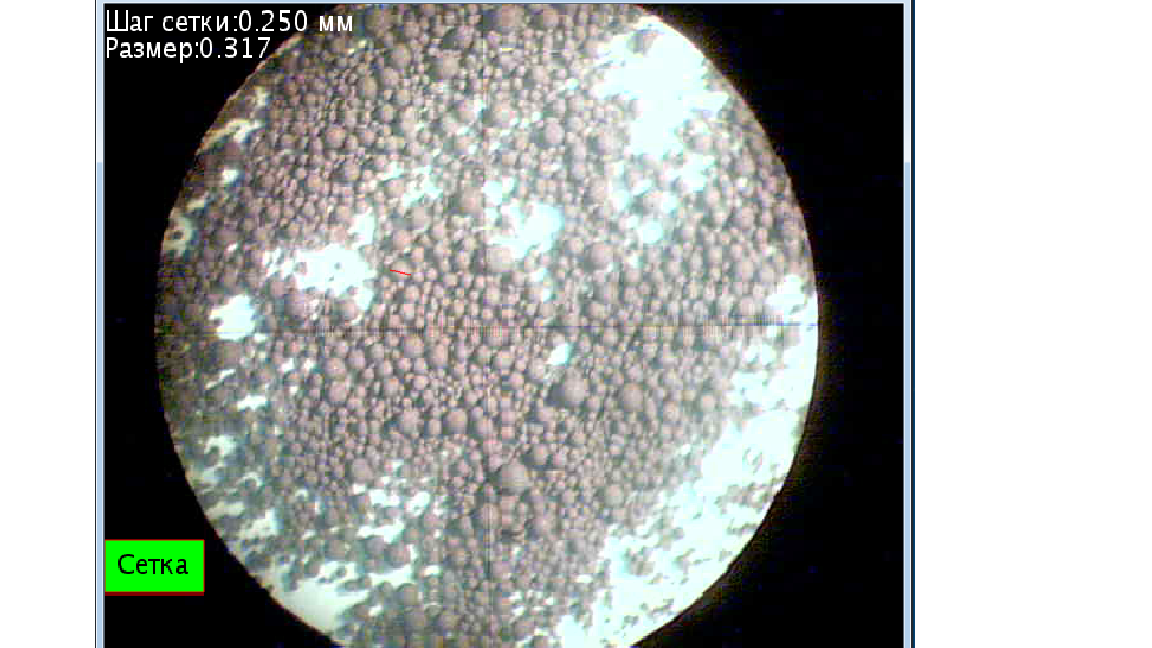
And this is granular ferrite.

Well, actually the code itself. (At least comments, if necessary, write)
Ready exe (x64, need Java, JRE)
I apologize for the quality of the photo and possible errors in the text.
Source: https://habr.com/ru/post/374561/
All Articles